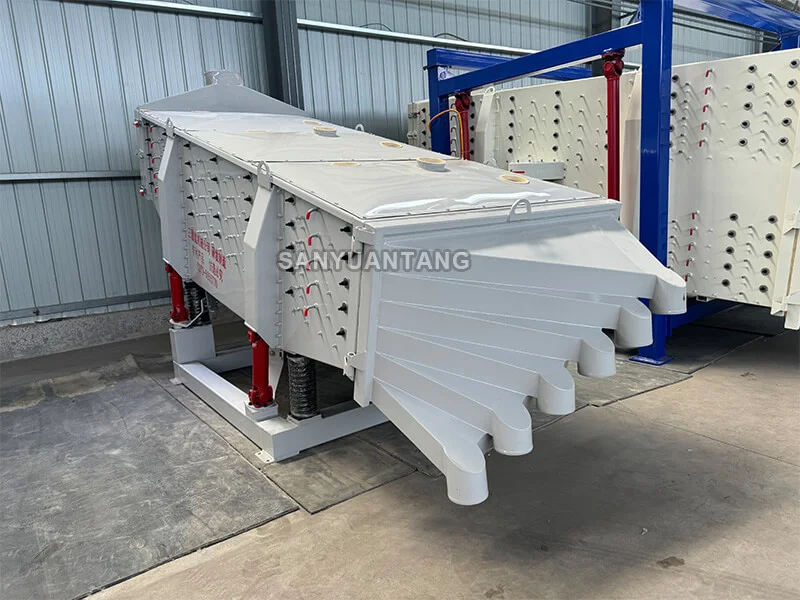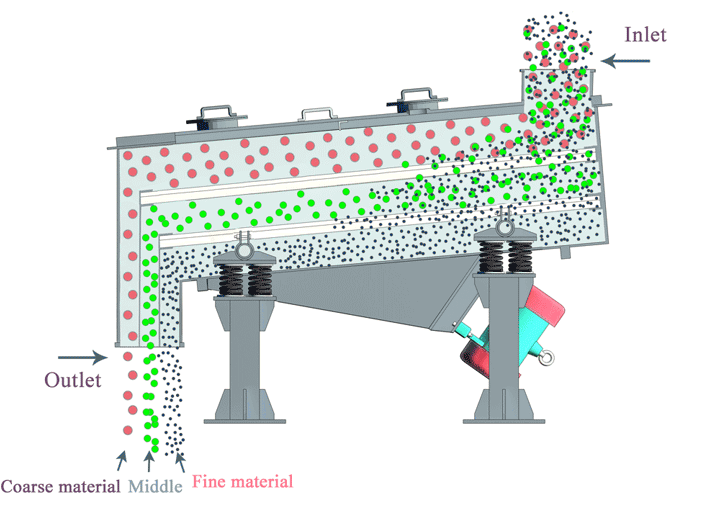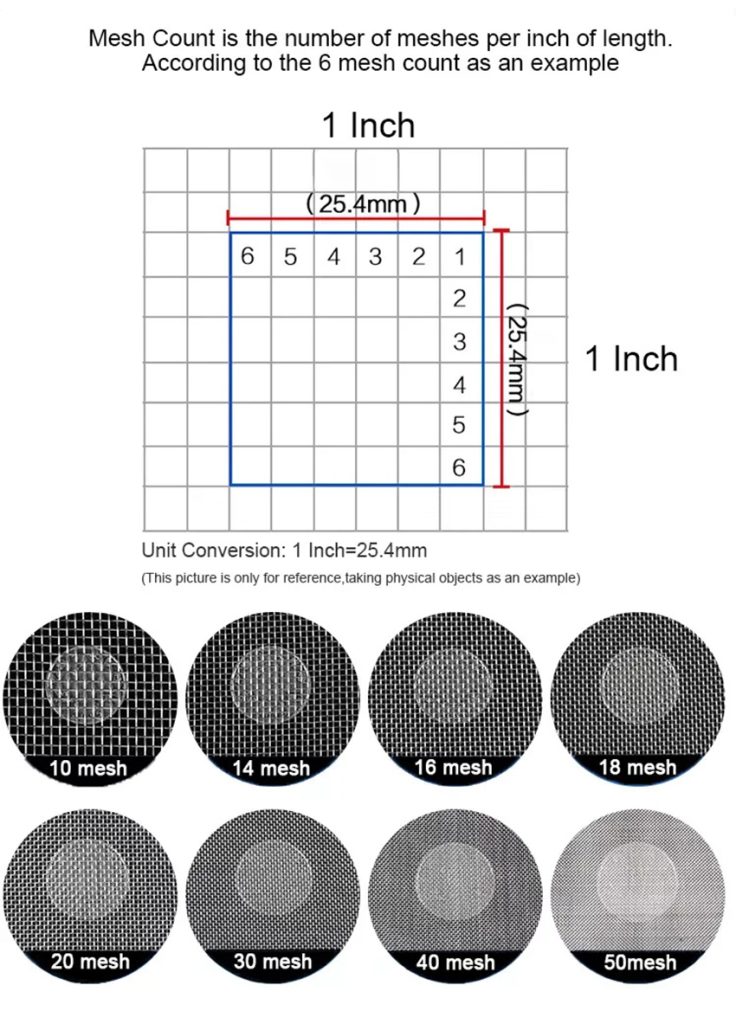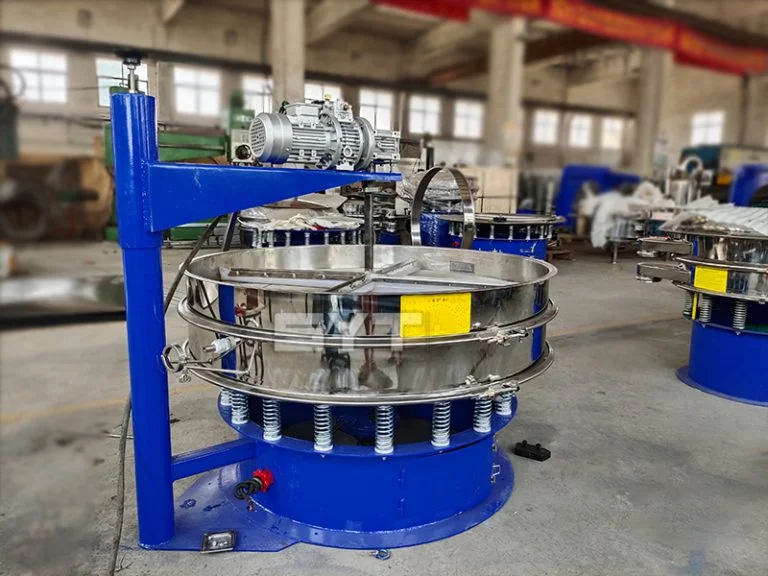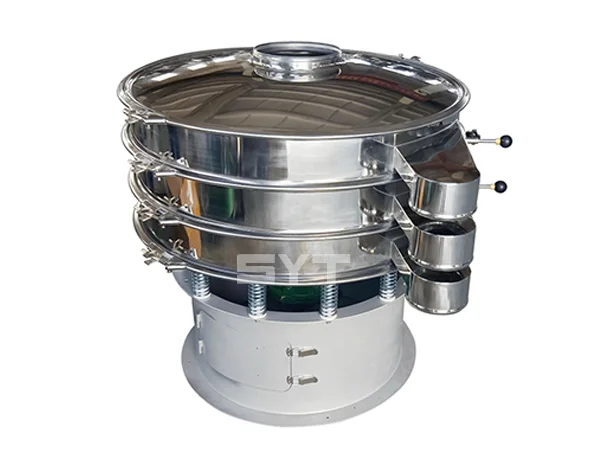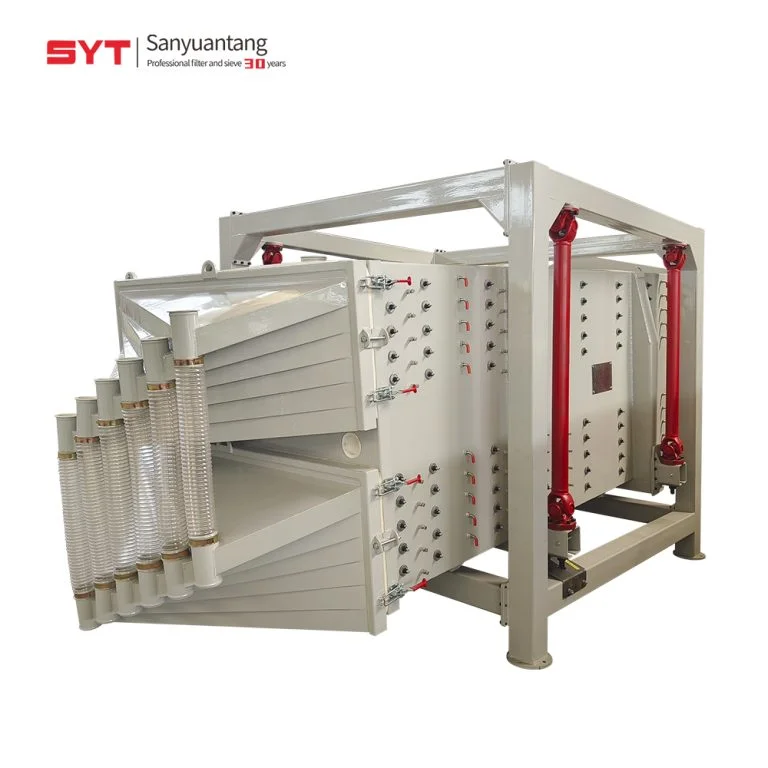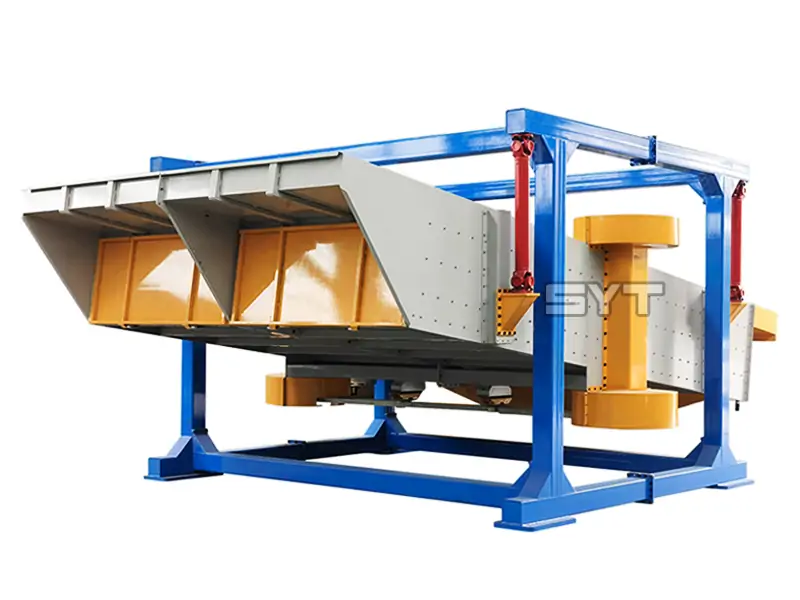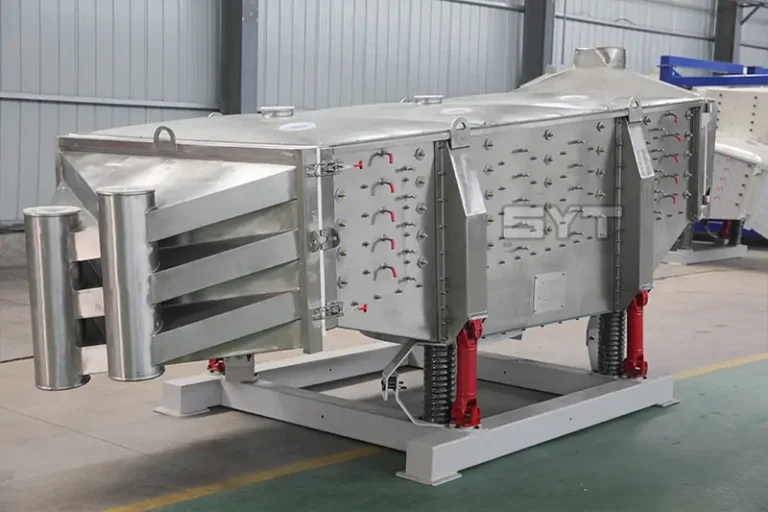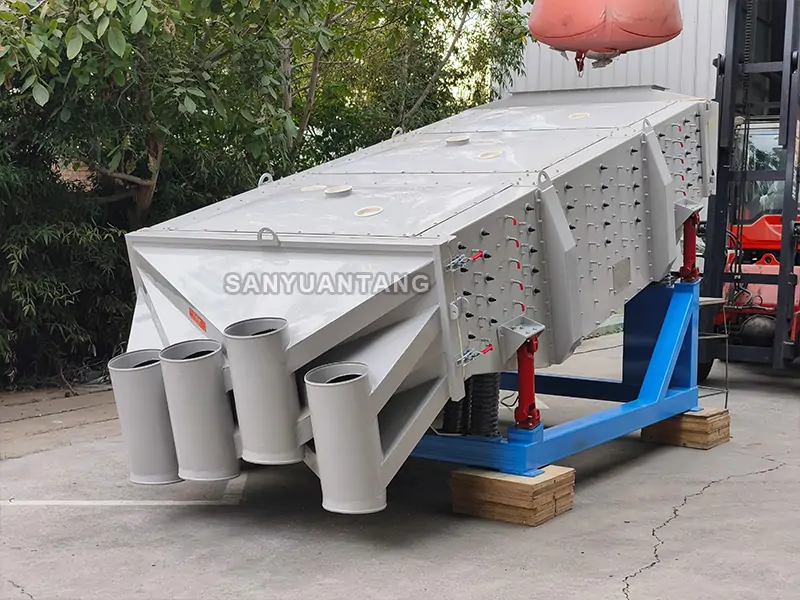In the solid material screening industry, there are two highly efficient devices that often confuse purchasers, who are unsure of their differences. Although both are commonly used in the linear vibrating screening field, they exhibit distinct operational characteristics and application scenarios. Below, we will compare their working principles, product features, material application ranges, and core parameters to understand the differences between the Linear Swing Vibrating Screen Machine and the Large-inclination Swing Probability Vibrating Screen.
Comparison of Working Principles Between the Linear Swing Vibrating Screen Machine and the Large-inclination Swing Probability Vibrating Screen
Linear Swing Vibrating Screen Machine: This is an optimized design that combines the advantages of both linear vibrating screens and rectangular swivel screens, making it an ideal choice for high-precision, high-reliability grading and screening applications.
Screen surface movement: The screen surface moves in a straight line forward and backward, combined with a simulated manual side-to-side screening motion.
Material Movement: Materials on the screen surface primarily undergo forward throwing and sliding forces, passing through the screen in layers. The movement trajectory is relatively regular and controllable.
Large-Inclination Swing Probability Vibrating Screen: This machine is based on the Linear Swing Vibrating Screen Machine, with the addition of a large-angle and three-dimensional motion trajectory design, making it an ideal choice for applications requiring high throughput and rapid separation.
Screen Surface Movement: The screen surface is installed at a large incline (typically 30°-60°) and performs complex three-dimensional motion (including swinging and twisting) under the influence of vibrating force.
Material Movement: Materials primarily advance on the steep screen surface through jumping and bouncing. Utilizing the principle of probabilistic screening: particles smaller than the screen aperture size have a certain probability of passing through the screen during the jumping process.
Based on the above different working principles, we can clearly see that there are significant differences in material throughput and precision between them.
Let’s take a look at their product features together.
Product Features of Linear Swing Vibrating Screen Machine and Large-inclination Swing Probability Vibrating Screen
| Feature | Linear Swing Vibrating Screen Machine | Large-inclination Swing Probability Vibrating Screen |
| Screening Accuracy | High – Strict size-based grading with controllable precision. | Low-Medium – Probability-based principle allows minor mixing of near-size particles. |
| Processing Capacity | Medium (limited by screen size and material speed). | Extremely High – Steep angle and bouncing motion significantly accelerate material flow. |
| Material Layer Thickness | Relatively thick (layer-by-layer penetration). | Thin Layer – Rapid bouncing prevents material buildup. |
| Blinding Risk | Higher – Especially for wet, sticky, flaky, or fibrous materials. | Very Low – Bouncing motion + steep angle enhances self-cleaning. |
| Height/Footprint | Lower height but longer length (requires sufficient screening distance). | Taller Height (due to steep angle) + Shorter Length → Compact Footprint. |
| Energy Consumption | Medium. | Generally Lower (high throughput improves efficiency). |
| Maintainability | Relatively complex structure; more maintenance points. | Simpler structure (especially single-motor drive); easier maintenance. |
| Noise Level | Medium. | Potentially Higher (due to material impact during bouncing). |
Comparison of Material Application Ranges for Linear Swing Vibrating Screen Machines and Large-inclination Swing Probability Vibrating Screens
Linear Swing Vibrating Screen Machine:
Material: Dry, free-flowing, uniformly sized particles with high requirements for grading accuracy.
Typical Applications:
Food/Agriculture: Fine screening and grading of rice, wheat, legumes, starch, sugar, and salt.
Chemicals/Plastics: Grading of resin particles, fertilizers, soda ash, and fine chemical raw materials.
Metallurgy/Mining: Grading of mineral sands, metal powders, and abrasives with strict particle size requirements.
Construction Materials: Grading of quartz sand and glass beads.
Not Suitable: Wet and sticky materials, materials prone to clumping, flake/fiber-like materials, and coarse separation with low precision requirements.
Large-Inclination Swing Probability Vibrating Screen:
Materials: High-moisture, sticky, easily clogging materials with low precision requirements and requiring rapid processing.
Typical Applications:
Coal Industry: Particle size classification of raw coal and washed coal (especially de-silting, de-mediuming, and dewatering), and recovery of fine coal. This is its primary area of expertise.
Metallurgy/Mining: Screening of sintered ore and pelletized ore before/after cooling, and coarse screening of raw ore.
Power/Construction Materials: Screening of coal for fluidized bed boilers, limestone, and gypsum.
Waste Management: Coarse screening and sorting of municipal solid waste and construction waste.
Grain Pre-Cleaning: Rapid preliminary cleaning of raw grain.
Not Suitable For: Applications requiring strict precision in product particle size distribution.
Parameter Comparison between Linear Swing Vibrating Screen Machine and Large-inclination Swing Probability Vibrating Screen
| Feature | Linear Swing Vibrating Screen Machine | Large-inclination Swing Probability Vibrating Screen |
| Screening Accuracy | High – Strict size-based grading with controllable precision. | Low-Medium – Probability-based principle allows minor mixing of near-size particles. |
| Processing Capacity | Medium (limited by screen size and material speed). | Extremely High – Steep angle and bouncing motion significantly accelerate material flow. |
| Material Layer Thickness | Relatively thick (layer-by-layer penetration). | Thin Layer – Rapid bouncing prevents material buildup. |
| Blinding Risk | Higher – Especially for wet, sticky, flaky, or fibrous materials. | Very Low – Bouncing motion + steep angle enhances self-cleaning. |
| Height/Footprint | Lower height but longer length (requires sufficient screening distance). | Taller Height (due to steep angle) + Shorter Length → Compact Footprint. |
| Energy Consumption | Medium. | Generally Lower (high throughput improves efficiency). |
| Maintainability | Relatively complex structure; more maintenance points. | Simpler structure (especially single-motor drive); easier maintenance. |
| Noise Level | Medium. | Potentially Higher (due to material impact during bouncing). |
Conclusion and Selection Recommendations
When you require high-precision particle size classification and need to process dry materials with good flowability and low tendency to clog screens, the Linear Swing Vibrating Screen Machine is an ideal choice. When you require extremely high processing capacity, rapid material separation, and need to process wet, sticky, easily clogging, and difficult-to-screen materials (such as coal), the Large-inclination Swing Probability Vibrating Screen is the recommended option.
Of course, this is merely a selection based on the intended application. When choosing equipment, we must also consider various factors such as price, functionality, specific production environment, and actual production requirements, which may lead to different choices.
If you are seeking such equipment, please contact us immediately. We have over 30 years of experience in the production and manufacturing of screening equipment and offer numerous production solutions. Contact us now, and our professional team will be at your service.

